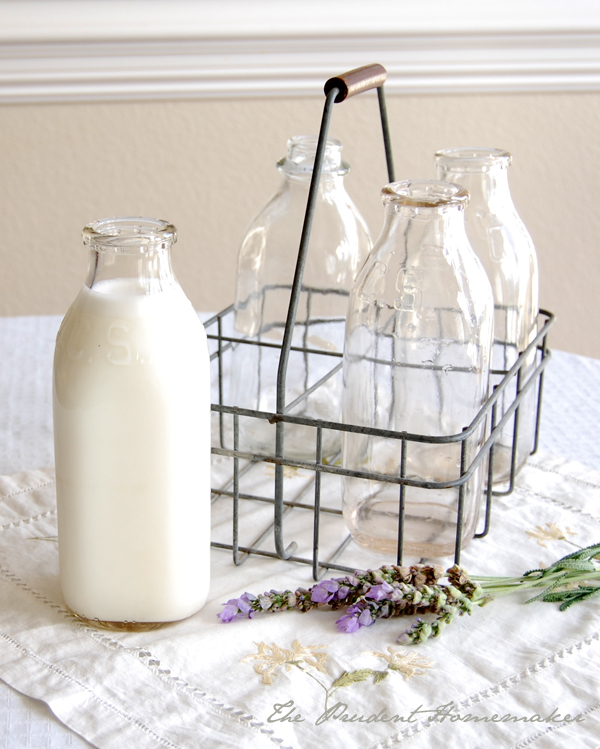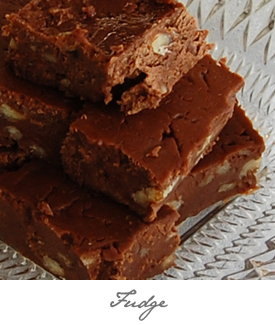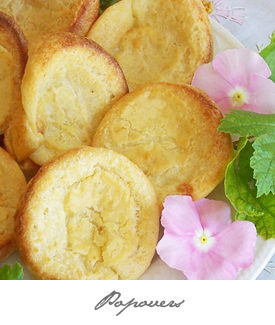
Wouldn’t it be nice to not have to run to the store for milk?
When you’re living on your food storage, buying milk just isn’t a possibility. Having powdered milk and evaporated milk in your pantry helps you to make several more meals. If you have them, and you just need 1/4 cup of milk, you can mix up just that much!
Using Powdered Milk
Powdered milk isn’t just for drinking. In fact, I prefer to drink water (and I LOVE milk!) Nevertheless, I use powdered milk almost every single day. Here are some of the ways I use it:
In oatmeal
I like my oatmeal creamy, but I don’t want to pour reconstituted powdered milk on top. Instead, I add 1/4 cup of powdered milk in with our oats (4 cups), water, and salt when I make oatmeal. I cook it on medium to prevent scalding, and make sure to stir it up really well at the beginning and while cooking. You can add more or less milk depending on your tastes.
In baking
You can either reconstitute milk to use in baking, or you can add the powdered milk and the water separately to the mixing bowl.
In ranch dressing
I use both powdered and evaporated milk when making ranch dressing. If I want a regular dressing, I’ll mix the dressing mix with mayo and powdered milk. If I want it thicker (and more like a dip) I’ll use undiluted evaporated milk.
In place of buttermilk
You can store powdered buttermilk, but if you don’t have any, you can also sour your powdered milk in place of buttermilk or sour milk by adding 1 Tbsp vinegar to each cup of milk (pour vinegar in the measuring cup first, and then add milk to equal one cup milk).
To make yogurt
Powdered milk can be used to make yogurt. Many people do this and use a small amount of plain yogurt as their starter. You can also use acidophilus to make yogurt. If you are living on your food storage, you probably don’t have money to buy plain yogurt. If you store acidophilus in your fridge, you can use it instead. I add 1 tsp of liquid acidophilus (get this at the health food store in the refrigerated section) per quart of yogurt. You can also store powdered acidophilus and use that in place of the starter.
There are different ways that you can make yogurt, depending on what tools you have. This link provides several methods (be sure to read the comments for more methods). The recipe appears to use instant milk. You only have to heat the milk to 110º, not the suggested 180º degrees. It is VERY hard to get it to 180º without burning it.
For recipes for yogurt and cheeses using non-instant powdered milk, see here. You can easily use these methods using whatever kind of milk you have; just make sure to adjust the measurements for your type of milk.
Types of Powdered Milk
There are three types of powdered milk. They measure differently, which is important to know when reconstituing powdered milk and measuring for recipes. One thing to remember is that powdered milk is skim milk; removing the fat enables it to have a longer shelf-life.
Instant Milk
This is the most readily available kind of milk. It does not say powdered on the box; it just says “instant” milk. However, this is the most common type of milk available to buy, and is a type of powdered milk. It is more of a granule than a powder. It measures 1/3 cup milk to 1 cup water to reconstitute. Whether you mix it with warm water or cold, it mixes without lumps. There are several names you’ll see on the shelf for this: Carnation and Kroger brand are two.
Instant Powdered Milk
A true powder, this milk easily mixes with cold water and dissolves without lumps with a little bit of stirring (a whisk is helpful). It measures 1/3 cup milk to 2 cups water—twice as much water as the instant milk. I have bought this kind vacuum-sealed in food grade buckets from Walton Feed.
Non-Instant Powdered Milk
This is the type of milk found at LDS canneries. Non-instant powdered milk measures a little differently: 3/4 cup milk to 4 cups water. It dissolves best in warm water and after stirring it is good to put it in the fridge overnight (or for several hours) before using.
Using Evaporated Milk
Evaporated milk says it has a shelf life of 6 months. It is fine past that (I have used it 3 years past the date), but the cream will start to separate out at the top and bottom of the cans, so you’ll want to open them like a can of corn and scrape the lids to get all the cream from them if they’re older than a year.
In the beginning, I didn’t know you were supposed to dilute it (I know now!). It is not exactly equal, but the instructions on evaporated milk are to add one can water to one can of milk to make whole milk. Evaporated milk contains all the fat of whole milk.
Evaporated milk can be substituted for light cream, if you do NOT dilute it. Some recipes do not require you to dilute it. If you are making something that requires cream (soups and desserts, for example), or requires whole milk, you can use evaporated milk.
Whipped Cream
If you get it really cold, it can be whipped like whipped cream. It has to be REALLY cold or it won’t work. It won’t hold for long, and only makes really soft peaks. You’ll need to add some sugar in with it for whipping. Due to how evaporated milk is processed, it will whip for a short time. See the Whipped Carnation Evaporated Milk Recipe.
Gravy
I use it to make gravy for biscuits and gravy. Milk gravy with just powdered milk or just evaporated milk is nasty (I’ve tried both), but if I dilute the evaporated milk like it says and also use powdered milk, there’s no strange taste. I just use half of each to make milk gravy for biscuits.

Recipes using powdered milk and/or evaporated milk
 |
 |
 |
 |
 |
 |
 |
 |
 |
|
